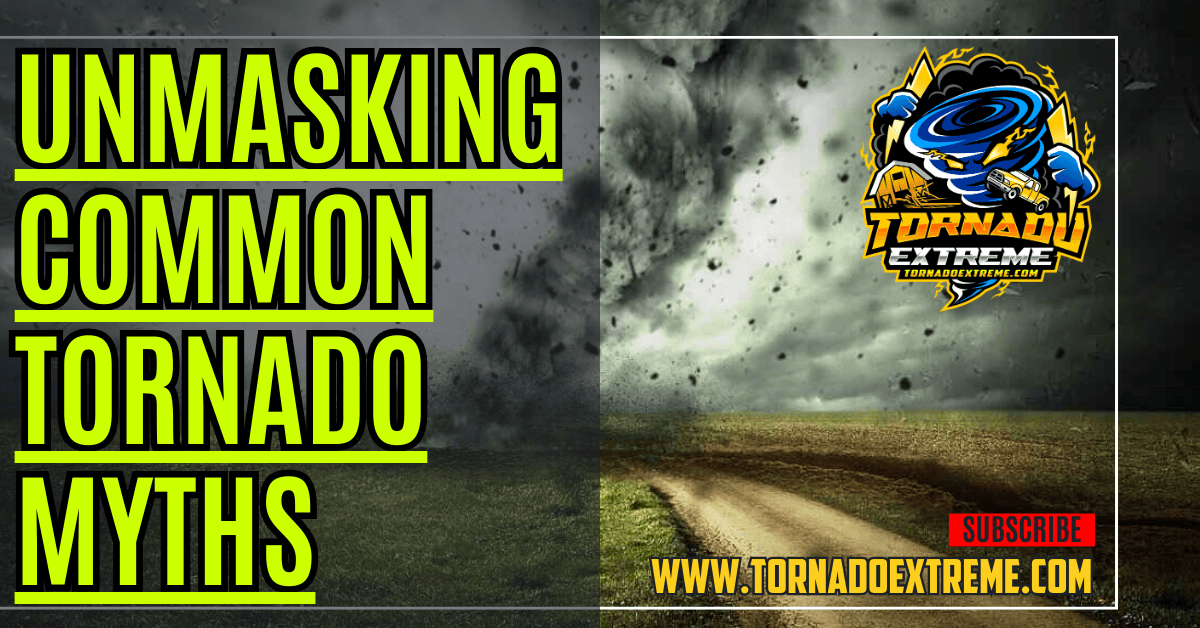Tornadoes! – One of the most amazing and frightening natural disasters on Earth. They come in with a bang and leave with destruction. It’s no surprise that there are tons of myths about them. Some are just plain weird, others just give you false info, and a couple can even put you in danger.
That’s why we’re here today; to debunk some of the weirdest myths about tornadoes, and shine a light on how they actually work. From the belief that tornadoes only happen in Tornado Alley (a real place by the way), to opening windows during one being dangerous (dumb idea by the way), we’ll explain everything you need to know. We hope this helps out everybody from weather enthusiasts, to anyone who lives within earshot of tornado warning sirens.
1. Introduction to Common Tornado Myths: The power and mystery of tornadoes
Few natural disasters match the awe-inspiring power and terrifying force of a tornado, making the lowest floor of a building the safest place during such events. These twisting, swirling monsters strike quickly, deliver a devastating blow, and vanish before we’ve even had time to understand what just happened. In the aftermath, they leave behind a trail of destruction and confusion.
It is this confusion that has led to numerous myths about tornadoes. From falling mid-summer snowflakes to lifting cows into the air, there are countless tales surrounding these powerful storms, including their unexpected paths, which can cross rivers and lakes, defying common myths. The majority of which are either improbable or completely untrue.
In this post we will debunk some of the most common tornado myths and explain a bit more about how these dangerous weather events really work. Tornados can be fascinating to learn about from a scientific perspective or simply out of curiosity for one of nature’s most mysterious wonders.
Either way, stick around if you want to bust myths like “You should open your windows during a tornado” or “Tornadoes only happen in the U.S.” More information about tornadoes can never hurt — especially if it helps save lives.
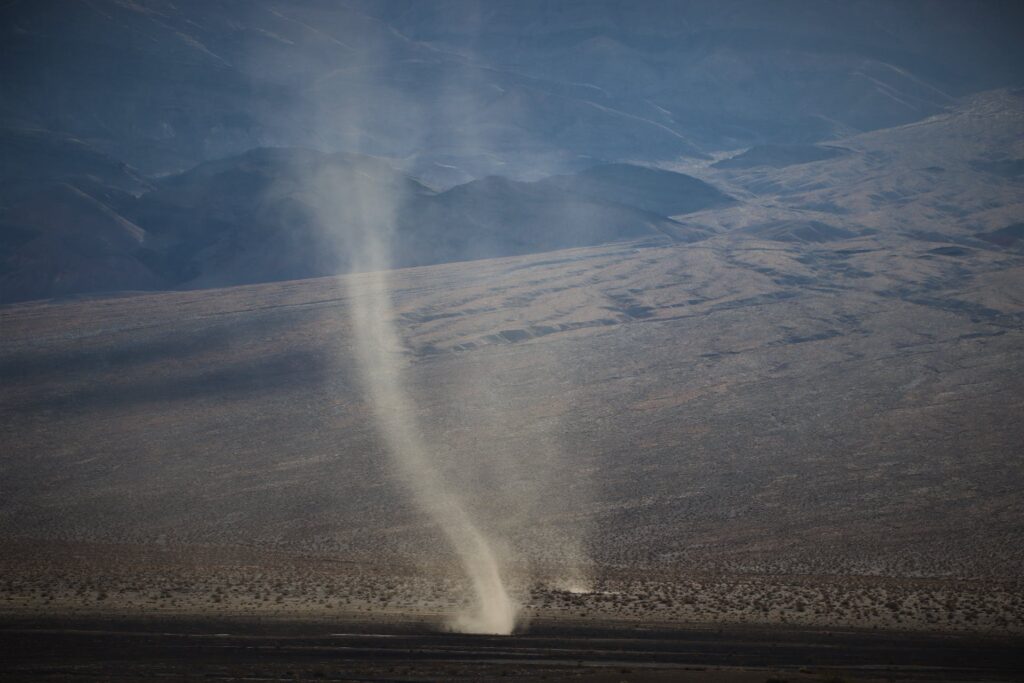
2.Common Tornado Myths #1: Tornadoes only occur in “Tornado Alley”
People think tornadoes can only happen in one place. Can you guess where? It’s called “Tornado Alley.” Now, while it is true that this region does get more than other areas of the US, they’re clueless if they think tornadoes are exclusive to their alley, since even large cities like Salt Lake City can experience tornadoes. They can happen anywhere, at any time across the globe.
Tornadoes are exactly what it sounds like – a weather event. When hot and cold air come together, things start to spiral, often leading to tornadoes that can ravage large cities if the conditions align. In terms of regions where these conditions align, Tornado Alley is not unique. Europe has them too! Australia has them too! Even the poles have them!
So why did this area gain its reputation as the only place tornadoes hit? A combination of geographical and meteorological factors. Spanning from Texas to the Dakotas, this alley contains specific atmospheric conditions that make for big and mean whirlwinds. Once again though, people need to understand that these monster storms don’t just happen here.
If you live outside of Tornado Alley: be aware of what can happen near you! Don’t be so caught up in thinking these massive spinning systems can’t touch down because your town isn’t located within an alley’s boundaries. Chances are there are places around that do experience severe weather — and you’ll want to be prepared for it when it comes.
3. Debunking Myth #1: The truth about tornado frequency and location
Unfortunately there’s a lot of misinformation out there; making sure people know the facts regarding tornadoes is crucial for public safety. One myth that particularly needs debunking relates to their occurrence rates and locations.
Contrary to popular belief, tornadoes aren’t localized natural disasters only found within certain regions or seasons all over the world Throughout different countries in Europe, Asia,Austrailia,and South America, tornadoes have been reported. Suggesting that they only happen in the US is just wrong.
There’s also a belief that they’re only possible at certain times of the year. While “tornado season” typically occurs in spring and early summer, when cool dry air from Canada collides with warm moist air from the Gulf of Mexico to create severe thunderstorms, two things need to be understood.
Firstly: Tornadoes can develop at any time of year. Secondly: The frequency and intensity of these storms will vary depending on where you are geographically located. Even if you live in an area with little to no reports about these natural disasters happening; still be informed! They have a history of appearing out of nowhere.
To learn more about their true frequency and location, individuals should look to scientific data and historical records rather than relying on rumors from others. Once people know the facts, they can respond better to potential threats by developing emergency plans and staying aware during potentially severe weather conditions.
We hope that by debunking this popular myth about tornadoes we can show people how dangerous they really are. It’s time for people all over the world, including those living in mobile homes, to take a proactive approach in understanding them as a natural phenomenon and start making safety precautions.
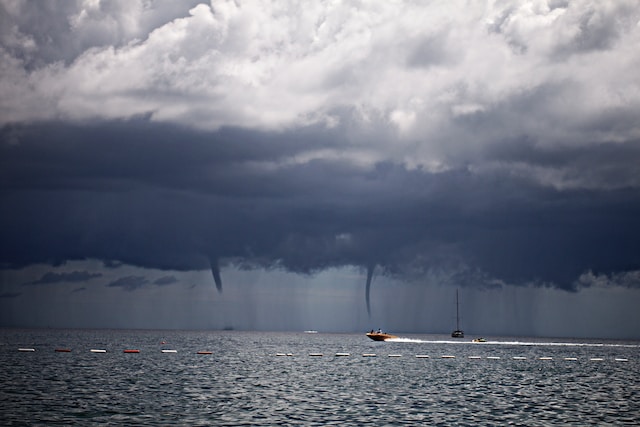
4.Common Tornado Myths #2: Opening windows will prevent your house from exploding during a tornado
This myth has been around for years and is often shared as common knowledge, but it’s actually quite dangerous. Opening windows during a tornado won’t help prevent an explosion, and it could get you hurt.
The idea behind this myth is that opening windows will help equalize the pressure inside and outside of the house, which would stop an explosion from happening. But here’s the thing: Tornadoes are incredibly powerful storms that can produce wind speeds of over 100 miles per hour. Opening your windows won’t change the pressure dynamics enough to matter.
On top of not providing much (if any) protection against an explosion, leaving windows open might increase your chances of getting hurt or causing damage. Powerful winds can rush into your home through open windows and create a swirling effect that rattles walls and transforms debris into projectiles. It’s much safer to hide in a windowless room on the lowest level of your house when there’s a tornado nearby, as the lowest floor is generally the safest place during such an event.
It’s also worth noting that explosive decompression isn’t how most tornado-related deaths or injuries occur in the first place. Walls collapsing, flying debris, and being flung by strong winds are all more likely causes of harm than explosions are.
Focus on seeking shelter when there’s a tornado warning instead of falling back on old wives’ tales about window safety — they could very well get you hurt.
5. Debunking Myth #2: The science behind tornado damage and window safety
Tornadoes have long captivated scientists and frightened communities. They’re fascinating phenomena capable of immense destruction, so it should come as no surprise that myths about them have popped up over time. This section addresses one such myth by explaining what really happens during twisters—specifically concerning their impact on homes and whether keeping windows open helps mitigate damage.
A commonly held belief is that opening windows during a tornado allows air to circulate, preventing pressure imbalances within the house and subsequent structural destruction. While it’s true that pressure differences can cause severe damage (as seen in bomb-blast videos where buildings implode), this principle doesn’t apply to twisters.
In reality, opening windows is futile when gusts exceeding 200 miles per hour are literally tearing houses apart from the outside. In fact, doing so can actually exacerbate the situation by allowing wind to rush into your home or by launching debris at high speeds.
When your city or town is issued a tornado warning, prioritize shelter over window manipulation. Take refuge in a small, windowless room on the lowest level of a building — ideally farthest away from outer walls and windows — such as a basement, bathroom or closet. The idea is to put as many barriers between you and any flying hazards as possible.
Building codes and construction practices have improved over time with an emphasis on sustainable structural strength and safeguards against tornado damage, especially important for large cities prone to such disasters. Windows are now built to handle strong winds and impact, reducing the risk of shattered glass or flying debris. However, believing that windows can act as the sole form of protection during a tornado is not only wrong but extremely dangerous.
By educating people about why it’s important to seek shelter away from windows, we hope that they will make safer decisions in the future. Allowing them to know how tornadoes work empowers individuals who may be affected by extreme weather to make informed choices that will go on to protect themselves and their loved ones. Once these misconceptions are corrected in society, our culture can grow towards being better prepared for such events.
See also: What is the Fujita Scale for tornadoes? Wind Speed Scale
By debunking the myth surrounding window safety during tornadoes, it becomes clear that seeking sturdy shelter away from windows is the most effective strategy for personal safety. Understanding the science behind tornado damage empowers individuals to make informed decisions during severe weather events, ensuring the well-being of themselves and their loved ones. With this newfound knowledge, we can dispel myths and foster a safer, more informed society.
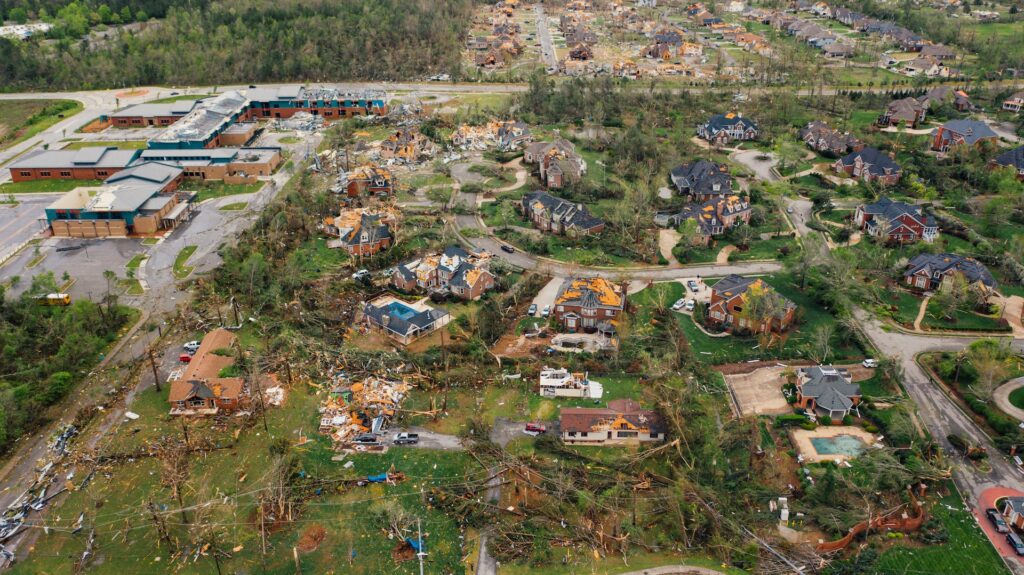
6.Common Tornado Myths #3: Tornadoes always travel in a straight line
One of the most common myths about tornadoes is that they travel in straight lines, ignoring geographic features like rivers and lakes, which is simply not the case. This might make sense though, because it does seem like lots of them do. Right? Well, that’s actually not true. Although many tornadoes do follow a linear path of destruction, not all of them do. Tornadoes can have any number of paths including curved, zigzagged or even circular ones.
The idea that tornadoes go straight might come from the fact that they commonly form in thunderstorms and supercells which typically move linearly. But that doesn’t mean the actual tornado itself will take a straight path too. Wind shear, terrain and storm dynamics are some factors that can cause a tornado to deviate from its trajectory.
Tornadoes also tend to be erratic as well as unpredictable little buggers, changing direction without warning and suddenly too. That’s why it’s always best to take warnings seriously when they’re given by experts and weather services.
Realizing what tornado behavior actually looks like is important for our own safety during storms like these, such as understanding the critical need to take shelter on the lowest floor away from windows. By debunking these myths people can better prepare themselves for whatever happens next time there’s a twister nearby.
7. Debunking Myth #3: The reality of tornado paths and their unpredictable nature
The truth about tornadoes is pretty complicated because there isn’t one single way you could describe them all at once—especially when it comes to their paths, which can unpredictably change direction towards rivers and lakes. Meteorologists have made some great headway when it comes to predicting what areas are most likely to get hit by one but figuring out exactly how it’ll look or where it could go next is still really difficult.
Most people know that tornados form inside supercell thunderstorms by rotating updrafts caused by wind shear, atmospheric instability and changes in topography—but did you know millions of other things play into shaping its path?
The fact that you never really know what direction a tornado could take is why it’s so important to stay informed on weather updates and warnings. Since they can change their strength and movement in an instant, there’s really no way for you to know whether or not your area is safe until the experts say so.
Lastly, let’s clear up one more thing. Even though some regions get more tornados than others, these little guys don’t have specific preferences for where they show up in the world. Anywhere and everywhere has a chance of seeing one as long as the right conditions are met. These quirky weather events have been reported on every continent except Antarctica.
It might be kind of scary to think about what those conditions might look like but being aware of them could save your life someday. Make sure that your emergency plans cover all bases just in case something like this were to happen near you—trust us, it’ll be worth it.
8.Common Tornado Myths #4: Tornadoes can’t cross major bodies of water
One of the most controversial myths about tornadoes is that they cannot cross large bodies of water. For years, this lie has been circulating and leaving coast-dwellers with a false sense of security. It’s time to figure out what tornadoes are really capable of.
Contrary to popular belief, tornadoes do not become paralyzed once they reach water. In fact, it takes more than a simple lake or ocean to stop these spinning wind monsters. No doubt water does shuffle up the mix a little bit; however, it doesn’t completely destroy their power either.
It’s true that water weakens tornadoes when they approach, but it does not stop them from moving forward. The wind shear and atmospheric conditions that cause twisters in the first place aren’t affected by bodies of water. And in some cases, the moisture could even make them stronger.
Tornadoes have done this before — crossed over bodies of water — many times. They are unpredictable and dangerous at best. One minute they can be barreling down on you and then all of a sudden change course and intensity without any warning whatsoever.
To stay safe during one, it’s wise to have an emergency alert system in place as well as listen closely to the meteorological authorities’ advice and warnings. Tornadoes are nothing to take lightly whether you live near the coast or inland… so just don’t try your luck!
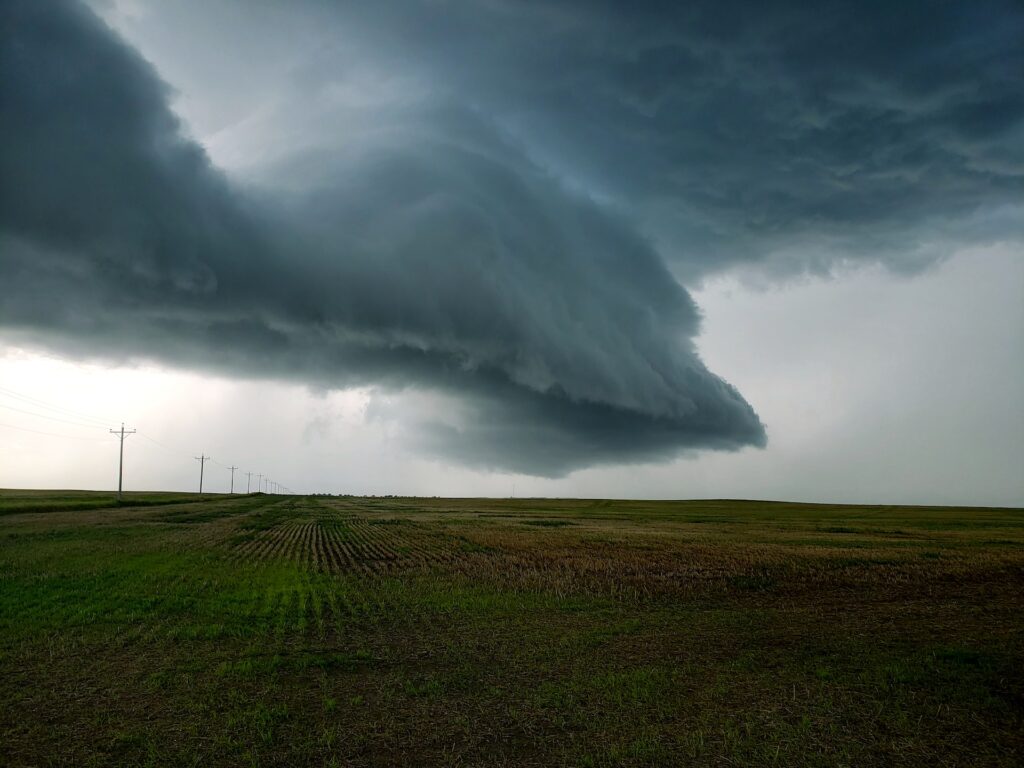
9. Debunking Myth #4: Understanding how tornadoes can form and cross water
It’s time we all started looking at twisters differently.
Most people see them as swirling monsters on land only — but did you know that there are tornados over lakes as well? At this point, we’ve all been caught in the eye of some myths and misunderstandings about tornados. It’s time to undo those lies.
Contrary to popular belief, tornadoes can without a doubt form over water. They’re called waterspouts. Waterspouts are twisters that start forming in bodies of water like lakes or oceans, but they can also happen on land with the presence of very large puddles or tiny rivers.
Not all waterspouts are created equal though. There are two kinds: Supercellular (the dangerous ones) and non-supercellular (the less dangerous ones). The super type looks just like your average land twister while the other would be something you’d see on a less windy day.
People tend to think that once they hit the shorelines or pastures, their powers get cut in half — nope! They actually make for even more destructive forces when they have access to boats, ships and communities vulnerable enough right there on the coast.
Tornadic waterspouts are what you call them one they’re out of water and onto land. These things could originate from either direction: Land to water or vice versa. They could’ve formed already or come up as soon as they reached your area.
Tornadoes on water is essential knowledge for everyone living near the coast, boaters and even people involved in emergency preparedness. Never underestimate what these natural disasters can do. They pose a threat whether they’re on land or at sea.
If we dispel the belief that tornadoes don’t form or move across water, we can help make more people aware of the problem and how to protect themselves. It doesn’t matter to a tornado whether it’s over land or not. So we should be informed so we can stay safe when a situation arises.
10. Common Tornado Myths #5:Tornadoes are always visible and can be easily spotted
One of the most pervasive myths about tornadoes is that they are always visible, with funnel clouds descending from the clouds and spinning across the landscape. Though some twisters do look like this, many don’t — especially at first.
In reality, the vast majority of tornadoes are hidden within rain or dust. According to recent research by Joshua Wurman of the Center for Severe Weather Research in Boulder, Colo., only about one-third of all tornadoes have a visible condensation funnel.
Even when it is light enough out to see a twister, many obstacles can block an observer’s sightline. A heavy downpour between a viewer and a tornado can render it invisible, as can low cloud cover or thick vegetation.
But even when storms arrive in clear skies on open plains, twisters sometimes appear out of nowhere. The rotating thunderstorms that produce tornadoes usually form high up in the atmosphere and then slowly descend toward what will eventually become their base (SN: 3/25/19). The condensation funnel might not touch ground until several minutes after clouds start swirling overhead. In those cases, there is no time to run for safety once people see something brewing.
It also doesn’t help that approximately 70 percent of tornadoes occur during nighttime hours when visibility is already limited. People who wait until they can see it coming to take cover will be caught off guard — if they survive the storm itself.
To protect yourself and your loved ones from potentially fatal ignorance about these dangerous weather events, rely instead on trusted sources like local news forecasts and mobile alerts about inclement weather
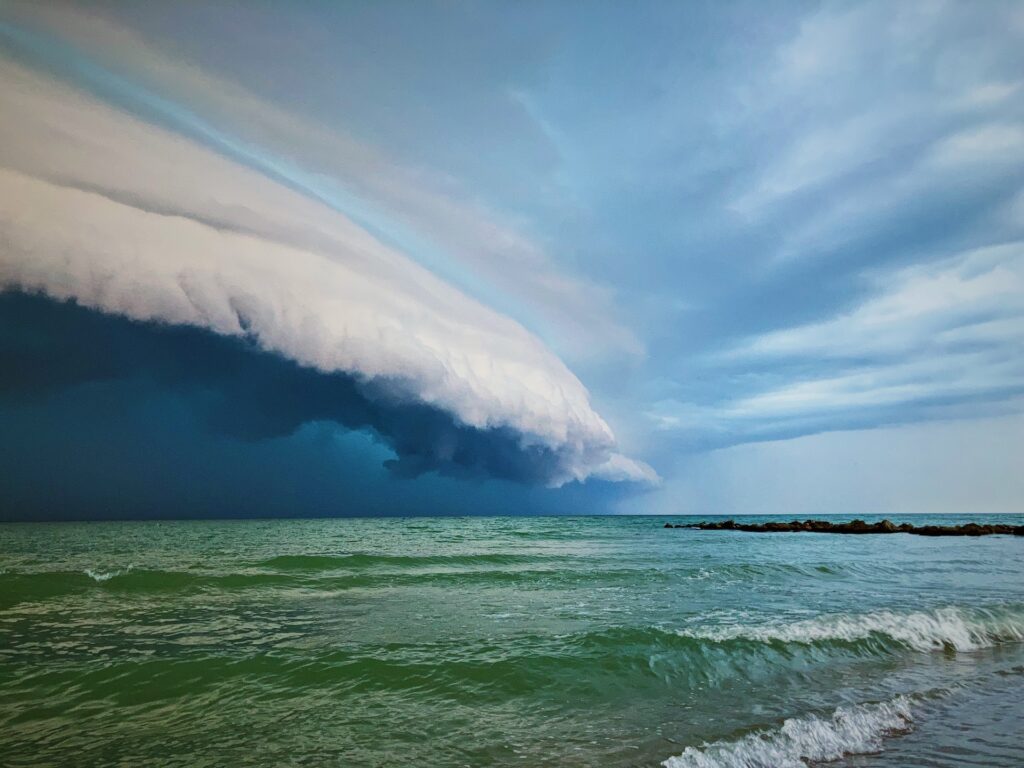
11. Debunking Myth #5: Exploring the challenges of tornado detection and visibility
Tornados invoke both awe and fear in people who witness them; however this leads individuals to create false narratives to fully understand them . One popular misconception surrounding twisters — as they are often referred to — is that they are highly visible, with long tails of cloud and debris above them. This may be true for certain tornadoes, but there are many hidden dangers.
It turns out most tornados don’t look like the ones you see in the movies. In fact, most of them can only be seen when looking at their effects on surroundings. Even if someone were to witness it coming from miles away, there would not be enough time to take cover; by then it would already be too late.
Visibility is another problem when dealing with these natural disasters; they usually form within a rainstorm or dust cloud, making it nearly impossible to see until it’s right in front of you. Furthermore, even if you had clear skies between yourself and the twister, your field of view might still be obstructed. Heavy rain or low clouds could cause the funnel to disappear into grayness or disguise its shape.
Tornadoes can come from a rotating column of air that reaches down from one cloud and touches ground – this air column doesn’t produce an obvious signal until just before touchdown . Once again, it’s already too late to react by then.
But waiting until you can see a tornado itself is extremely dangerous for more than one reason:approximately 70% of all tornadoes happen at night so waiting until it’s visible will put you directly in the path of danger
Experts reiterate frequently that relying on TV weather reports and smartphone alerts about severe weather conditions rather than on visual confirmation should save lives during such moments, as taking shelter immediately is crucial.
See also: How Fast Do Tornadoes Spin?
12. Conclusion: Separating fact from fiction about tornadoes
Tornadoes have a mysterious allure to them. The way they twist and turn, screech and scream is truly captivating. We’ve all seen them in movies or on the news, but we rarely stop to think about what causes these spinning spirals of destruction in the first place.
While some myths surrounding tornadoes are harmless (like that they’re caused by angry gods), others can be downright dangerous. It’s important to separate fact from fiction when it comes to tornadoes, because relying on myths could leave you unprepared in the event of one, such as thinking a southwest corner of a basement is the safest place.
That said, let’s dive into some of the most common misconceptions people have about TORNADOES:
1. Opening windows will prevent a tornado from destroying my home is a dangerous myth; taking shelter in a basement or an interior room on the lowest floor is far more effective.
This one seems almost too silly to address, but it persists as one of the most widely believed myths regarding tornado safety. In reality, opening windows doesn’t do anything except expose you to flying debris and high-speed winds. During a tornado, your top priority should be finding shelter in a basement or interior room on the lowest level of your home — away from exterior walls and windows.
2. Tornadoes only happen in certain regions or during specific seasons, but places like Oklahoma City know too well that they can occur with devastating frequency.
Sure, some areas are more prone to twisters than others (such as Tornado Alley in the United States), but that doesn’t mean other regions are safe from them entirely. The truth is that tornadoes can occur anywhere on Earth — at any time of year and during any season. They’re not restricted by geography or time; they’re just wild cards we humans have learned to dread over centuries.
3. Overpasses offer safe shelter during a tornado
Nope! Seeking refuge under an overpass during a tornado is arguably more dangerous than standing out in the open field (though both options should be avoided). Doing so may expose you to stronger winds and more flying debris than if you were hiding in a sturdy building or underground shelter. On top of that, you’re not even safe from being sucked up into the twister at an overpass; it’s safer to lie in a ditch if there’s absolutely no other shelter available. Find a secure structure or low-lying area to hide if those are your only options.
4. Tornadoes can always be seen from miles away
More often than not, yes: Tornadoes can be spotted from quite a distance — especially when they’re close enough to see but still far away enough to chase after for the best storm footage (Hi, storm-chaser Twitter). However, this doesn’t mean that all tornadoes are so photogenic. Some are wrapped in rain or obscured by darkness, making them difficult to spot until it’s too late. This is why it’s important to stay informed through weather alerts and warnings issued by local authorities.
Next time one of these myths comes up in conversation, don’t be afraid to correct the person spreading it (politely, of course). The more we share accurate information about twisters and how to stay safe during one, the better chance we have at avoiding unnecessary injuries or deaths caused by them. Stay informed and stay prepared!

